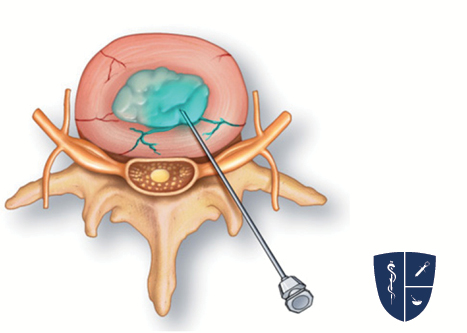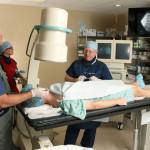Discography
This diagnostic procedure, also called discogram, is used to determine whether back pain is caused by one or more spinal discs. The procedure involves pressurizing suspect discs with an injection of sterile liquid to induce pain. Discography helps the specialist plan a course of treatment.
IV Inserted
In preparation for the procedure, the patient lies on the side or stomach on a table equipped with a type of x-ray unit called a fluoroscope. Medication is administered through an intravenous (IV) line to relax the patient. It is important for the patient to be awake enough to tell the physician what he or she is feeling. A local anesthetic is used to numb the skin and all the tissue down to the disc area.
Guide Needles Inserted
A guide needle is inserted through the anesthetized track to the outer edge of the disc. The physician uses the fluoroscope to identify the target disc. A smaller needle is inserted through the guide needle into the center of the disc. This may be repeated for several discs.
Discs Tested
Once all the needles are placed, the discs are pressurized one at a time with injections of contrast dye. With each injection, the patient may feel either pressure or pain. If the patient feels pain, the physician will ask the patient to compare it to the pain the patient has been experiencing. If the pain is the same, this may indicate a diseased disc. After each disc is tested, images are taken with the fluoroscopic unit.
Needles Removed
The needles are removed. The patient may be taken for a CT scan to obtain additional images of the inside of the discs.
End of Procedure
Discography usually takes less than an hour to perform. The procedure may cause soreness for a few days. The patient is usually advised to take acetaminophen or ibuprofen and to ice the affected area for several minutes each day until the soreness subsides.
Schedule your appointment today and meet with our providers to discover if this treatment is right for you.




